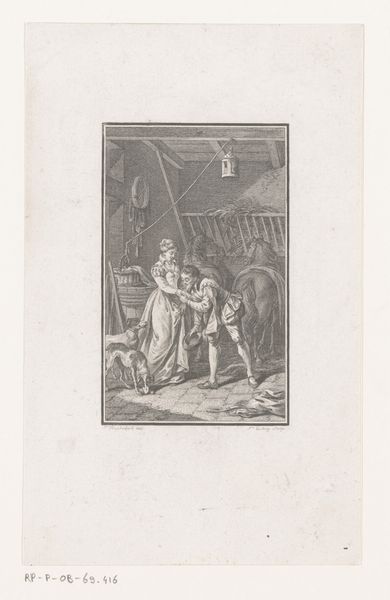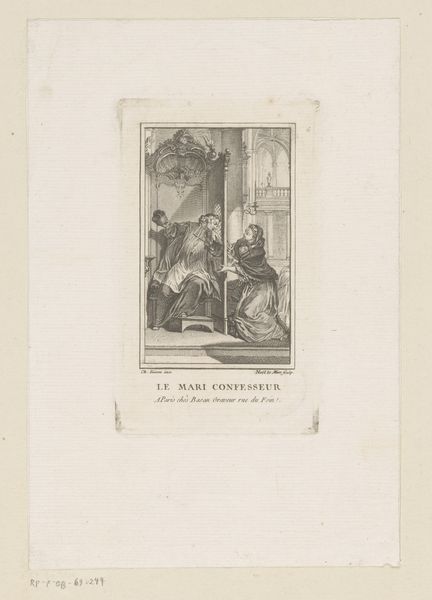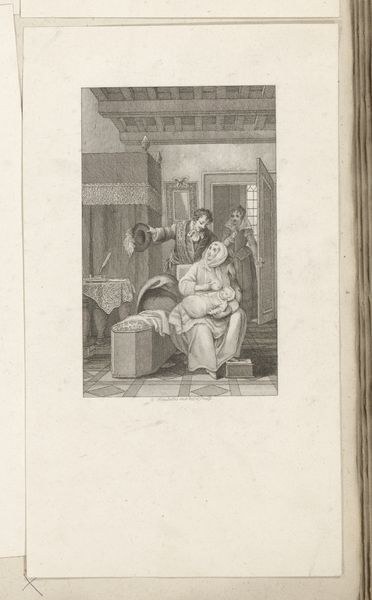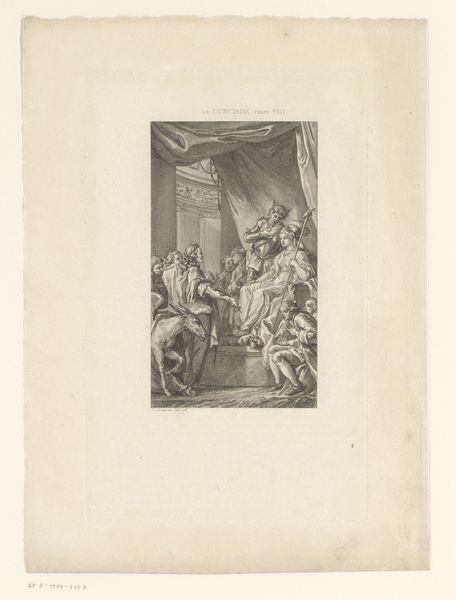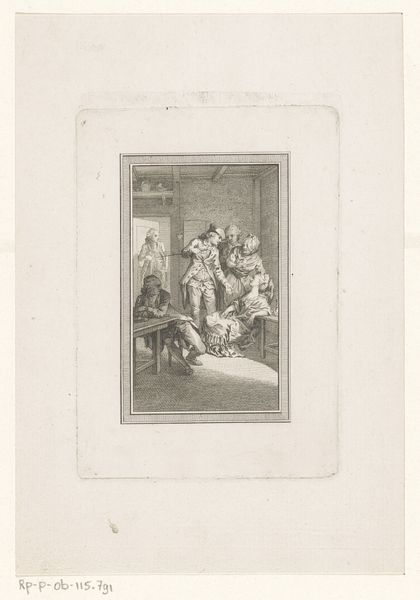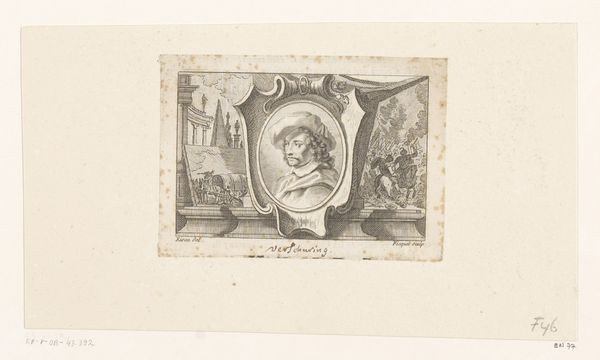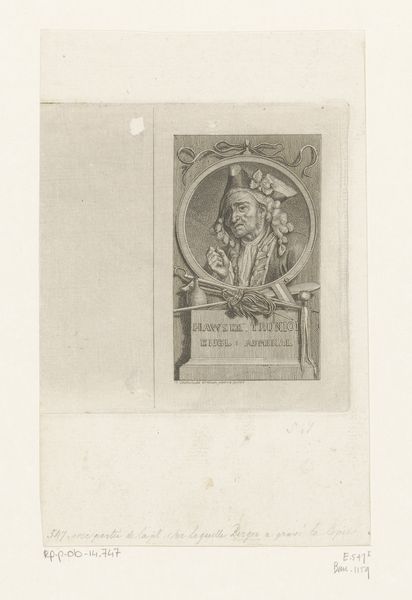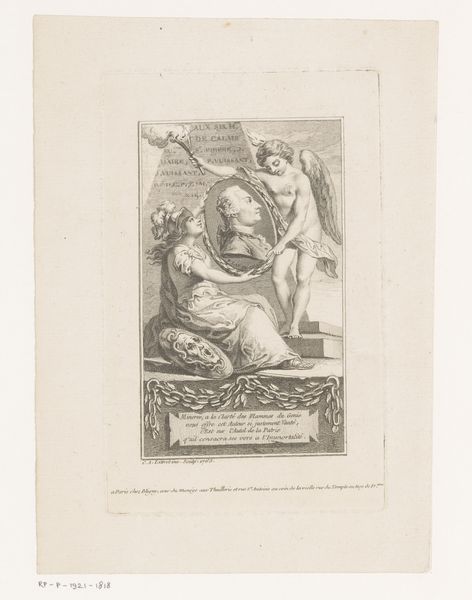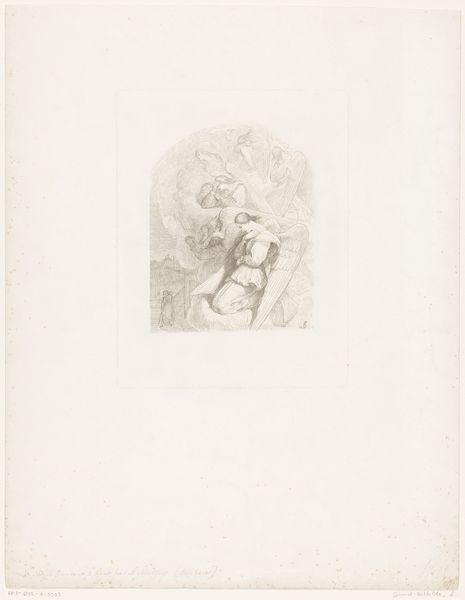
print, etching
#
portrait
#
medieval
#
narrative-art
# print
#
etching
#
11_renaissance
#
history-painting
Dimensions: height 184 mm, width 110 mm
Copyright: Rijks Museum: Open Domain
Curator: Let’s take a look at "Portret van Ulrich von Hutten" which roughly translates to "Portrait of Ulrich von Hutten", created sometime between 1743 and 1818 by Aegid Verhelst II. It’s a print, specifically an etching. My first thought is, how strange, sad and still it seems. A kind of melancholy lurks beneath the surface. Editor: I see him as a complicated man. Von Hutten was quite the figure during the Renaissance, a humanist, a knight… a revolutionary even! The armour signifies his knightly status of course, the laurel crown, possibly a symbol of honour and victory. Curator: You're right, he seems a man of contrasts. Noble in appearance, trapped in an image. The inscription – “Ich hab's gewagt” – means "I dared". Dared what, exactly? Is he lamenting a life lived boldly or regretting it? Or perhaps both at the same time. The mournful figure seated on the step beneath his portrait deepens the mystery. Editor: That’s very evocative imagery of grief, don’t you think? Ulrich’s earthly, material struggle may be coming to an end; perhaps there is hope, which is alluded to with ‘LIBERTAS’ inscribed on the figure’s sitting block. This could be the transition from tangible form, through life's strife, and towards a hopeful and abstract future. Curator: A striking detail is how confined he appears within the stone frame and then, a sad figure down below with her own stone inscription, separated in the abyss that suggests they cannot even meet for dialogue, much like those with real deep-seated grief can feel alone and trapped. The stark, gray tones only amplify the feeling. Editor: Yes, you're picking up on how the architecture itself seems to box him in, mirroring perhaps the constraints of the political and religious landscapes during his life, and the constraints he faces now. Curator: It's more than just a portrait; it is an etching where he peers at us across time, an artifact, like an unearthed memory tinged with the ambiguity and emotion inherent to all lived experience. Editor: Indeed. It brings together echoes of historical turbulence and visual symbolism, offering us a quiet reflection. It’s intriguing how visual cues shape our experience of history and affect us as people.
Comments
No comments
Be the first to comment and join the conversation on the ultimate creative platform.
